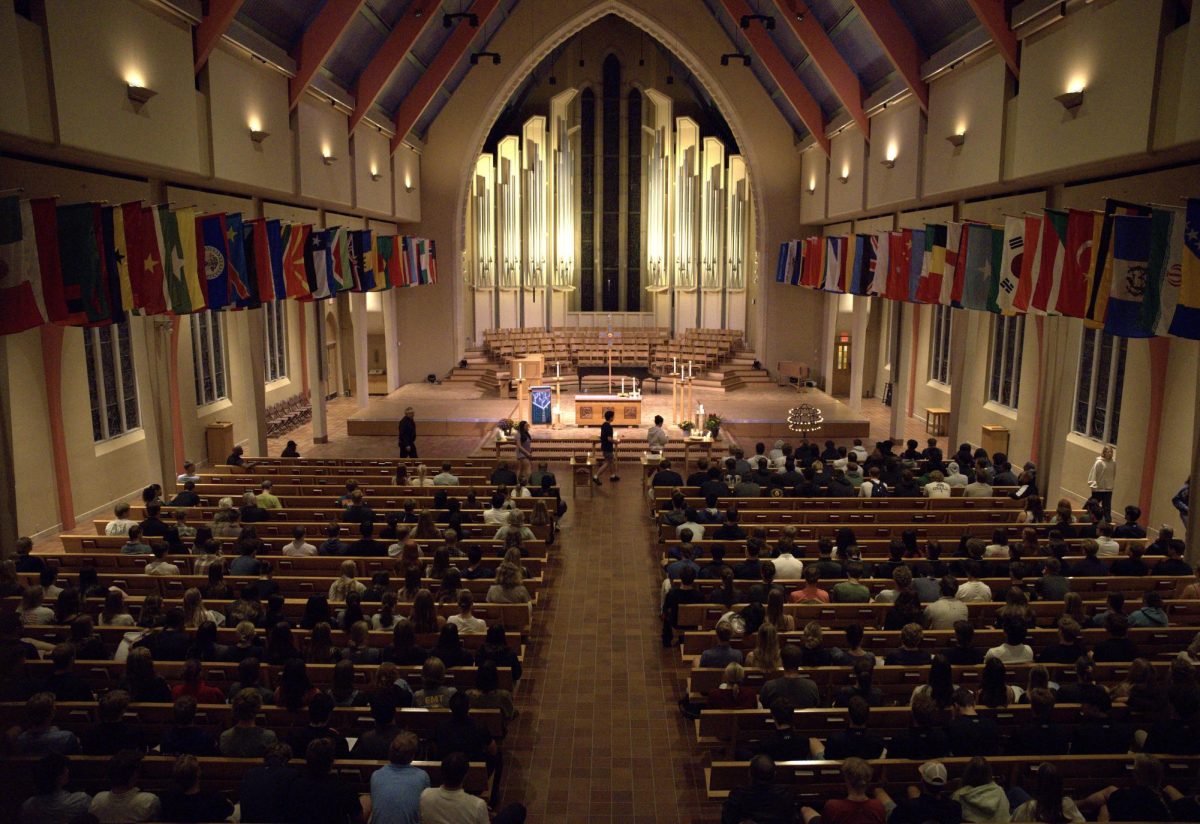St. Olaf Collaborative Undergraduate Research and Inquiry CURI is a unique campus organization that gives students research opportunities in any discipline. In this past year alone, 112 students participated in the CURI program. On Thursday, Sept. 25, in Viking Theater, two students presented their CURI project, “Asia in Northfield.”
Ka Wong, Professor of Chinese Language and Cultural Studies, was the event moderator as well as the faculty advisor for the student research on Asian-Americans in the Northfield community.
Wong worked with student researchers Jacob Caswell ’17, Paoge Moua ’15 and Meena Wainright ’16. He was enthusiastic about the project, calling it “an inspiring experience.”
Karil Kucera, who serves as chair of the Asian studies department, then gave a brief history of the department.
“I want to show the arch of where the Asian studies department has been and where it is now,” Kucera said. She provided dates that highlighted monumental achievements in the Asian studies department. The first Asian studies class debuted in 1937, and the first Chinese language course began in 1978.
Wong thanked Kucera for her words and invited the student researchers to present their work.
Caswell, a math and physics major, talked about community engagement and the danger of self-absorption.
“It is too easy to be wrapped up in ‘you against the world,'” said Caswell. “I got to work with a small group of people and got to discuss and debate on the community level. It was a humbling experience.”
Wainwright, an Asian studies concentrator and the second presenter for the evening, discussed the benefits of CURI research.
“I learned how to interview properly and gained an appreciation for Google,” said Wainwright. “The research expanded my knowledge of the Asian community in Northfield.”
Caswell and Wainwright gave the audience a glimpse into their research methods. They explained that their futile efforts to gain information from the Internet on counties in Minnesota led them to an ethnographical approach. They selected 10 Northfield residents – eight women and two men – and ultimately selected eight of these cases for analysis. Though the research went well, the presenters stressed that more male interviews would have improved their research. Caswell justified their interview- based research, stating that personal interactions gave a clearer picture of the Northfield Asian-American community than pure data.
“Answers convey very little compared to stories,” Caswell said.
Caswell was asked, “What was the most eye-opening revelation captured throughout your interviews and how did it affect your outlook on Asian – and, by extension, minority – culture in Northfield?”
Caswell answered, “I didn’t think of them as Asians. I thought of them as people.” He continued, “It was difficult to witness the strong cultural tension. It was hard to swallow.” He said that growing up in a neighborhood that was predominately white definitely shaped his perception of culture, but added that this research certainly provided a new, positive perspective on different cultures in society.
Wainwright highlighted the growing Asian population in Northfield. Currently, Asian-Americans make up 3.5 percent of the population.
The student presenters also showed a video with live interviews of the project participants. One storyteller said, “People say we all look alike.” She then went on to identify different cultural groups within the larger Asian-American community. These distinctions are often ignored.
Another storyteller was asked about her biggest regret as an Asian immigrant. The storyteller said, “losing my native language.” She lamented the fact that immigrants often abandon their native cultures and languages out of desire for acceptance.
After the video presentation, Caswell and Wainwright spoke one final time.
“These Asians’ experiences are different, but their dreams of a better life remain the same,” Caswell said. Wainwright added that Asians in the Northfield community are often ignored and are even mistaken for Hispanics.
“We should try to focus on the visibility of this community,” she said.
Professor Wong emphasized the benefits of personal nature of the CURI program.
“It is one thing to read books in class, but it is another to actually talk to the person who experienced these episodes in life,” said Wong.


